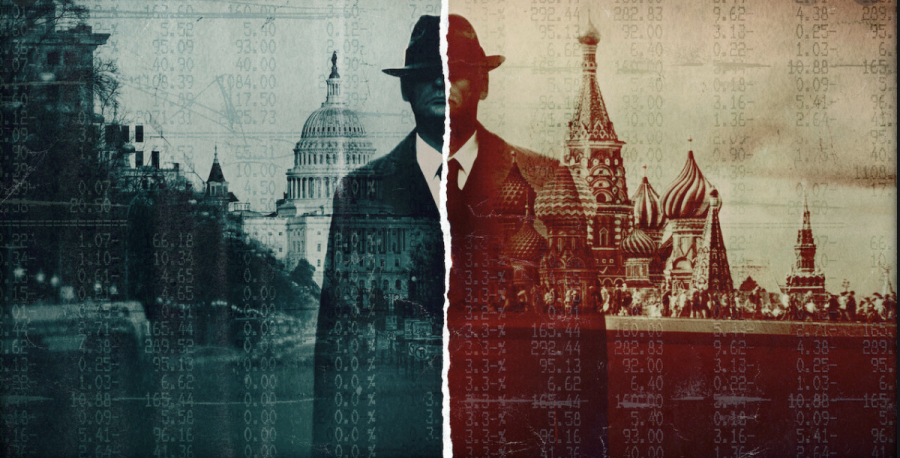‘Spycraft’ Docuseries Chronicles the Delicate Craft of Espionage
Netflix’s new documentary series, The Spycraft, chronicles the evolution of surveillance and espionage in foreign intelligence. This series reached number nine in the ‘Top TV Show’ category, taking an in-depth look at the specifics of spycraft from experts, historians, and former agents.
When you hear the word spy, you often compare it to what’s portrayed in unrealistic action movies. From the technological advancements and gadgets seen in the James Bond movies designed by Q, the character who is the brains behind all the high-tech gears used in each film, to the absurd scenes Tom Cruise acts out in his Mission Impossible sequence, popular culture has had an outsized role in shaping societal views of this secret-shrouded work. The media has created these stories to showcase an improbable and over-the-top storyline. However, these ridiculous stunts and unbelievable situations might actually have some truth to them.
This documentary takes us into the development of technology as well as different scenarios of the most unique and mind-blowing cases that the CIA and FBI have faced and their unbelievable solutions. Shown through lucid graphics and computer-made models, the first episode discusses the necessity of spying to gain information, assessing potential threats, stopping attacks, and gaining the upper hand.
“[In order] for a spy to have an idea of what an enemy is doing, there is perhaps no better way than if the spy could eavesdrop somehow,” intelligence historian and author Keith Melton said.
A creative mode of surveillance was developed in the 1970s by the STB, a Czechoslovakian intelligence agency. They targeted a U.S. ambassador by intercepting his imported shoes, modifying the heels, and planting an eavesdropping device. This wasn’t discovered until it was too late and important information had been leaked. Another foreign intelligence group that was caught spying on the U.S. government originated from Russia. Several typewriters were modified in the American Embassy located in Moscow, helping the Russian government easily access classified U.S. information.
“Inside [each] typewriter was a structural piece of aluminum,” retired Director of the Clandestine Information Technology office for the CIA Jim Gosler said. “What the Soviets have done through a shipping channel is basically, [they] took the typewriters apart and replaced that bar with a bar that looked exactly the same. Discrete electronics had been put inside, which appeared on the surface to be solid, but it actually was hollowed out.”
While information was being documented or typed out, the bar would make a copy of all the information to be transferred to the Russians. Throughout the ‘60s and ‘70s, microphones were continuously discovered in various places inside the U.S. Embassy. Everytime one was discovered, the KGB got more creative with where they hid them. Gosler and Melton accurately and easily described the extent of the possible threats that can occur everyday, providing realism to the world we live in.
The next section, titled “Deadly Poisons”, explains the discretion when it comes to the act of assassination in the spy world. The importance of dealing with these various methods is to never leave a trace behind. An excellent example is the case of Paul Joyal, a security analyst for the United States and a personal friend of a Russian traitor who had been poisoned. Joyla bravely, and some may say foolishly, went on Dateline to accuse Russian intelligence for being responsible for his friend’s death. A few days after, he was attacked.
“One shot fired, it entered about right [over the left hip] and exited [through the other side],” Joyal said. “And then, he came in close and I heard him [and] the gun click. And he chambered, tried to re-chamber the round [but] it jammed.”
Fortunately, luck was on his side and he survived. However, others were not so fortunate, such as Boris Berezovsky, a known enemy of Putin, who was found hanged in his bathroom and his partner Badri Patarkatsishvili, who had evidently suffered a heart attack at his home in London.
“Countries tend to eliminate people for many more reasons than national strategic policy. The most recent visible example would be the attempted assassination of Sergi Skripal,” Gosler said.
This feature explains how in 2010, Skripal was one of four double agents released from Russia in a spy swap with the U.S. He was a member of the General Directorate of Investigation (GRU), a Russian military intelligence agency, who was rumoured to have been cooperating with British intelligence to identify other GRU agents hidden around the world.
One day, his daughter Yulia came to visit him in England from Moscow. Closed-Circuit Television (CCTV) caught them leaving an Italian restaurant at around a quarter till four before being found unconscious 25 minutes later on a bench outside. The apparent foaming around their mouths was assumed to have been an overdose but it was later discovered that two suspicious men were lingering in and around the vicinity of Skripal’s home. They were both quickly recognized as active members of the GRU. Once the forensic analysis around the house was completed, Novichok, a type of nerve agent that attacks spaces between nerves and muscles to overwhelm essential bodily functions, was identified. The two suspects used chemicals on Skripal’s house door handle, so after coming in contact with it, he and his daughter fell fatally ill.
In response to this vicious attack, the British government publicly accused Russia of attempted murder.
“Novichok [is] banned by treaty [and] by the chemical weapons convention. [The fact that it] was used again in a foreign country to kill somebody [is] just brutal, it’s barbaric,” Joyal said.
Many believed it was a very pointed warning to anyone or any country who had betrayed Russia to beware. There are many other factors that mold an exceptional spy such as covert communications and sabotage. The series can be perceived as biased because it mostly portrays other countries as the enemy but rarely discusses any cases of American agents working to spy on other intelligence agencies or plot assassinations. Throughout there was a level of suspense held, alluring you to keep watching. The next segment discusses some of the most creative ways intelligence agencies have obtained inaccessible information including specific and unprecedented stories quoted from historians, authors, and retired agents. They present the requirements that make a good spy, special operations, and the secret to constructing a code and it’s encryption.

Hi, this is my second year at Student Press! My family and I are from Haiti, we moved to Florida but now we live in Austin!






